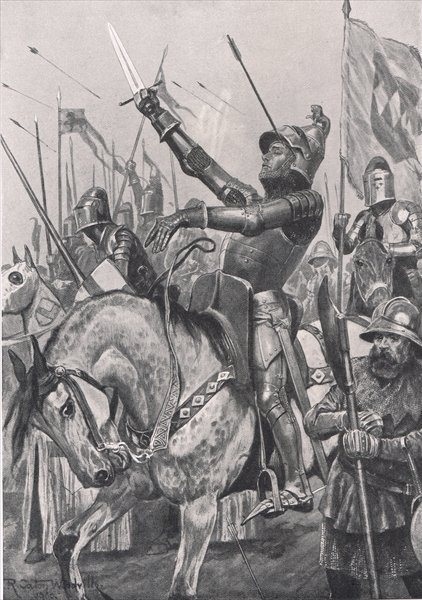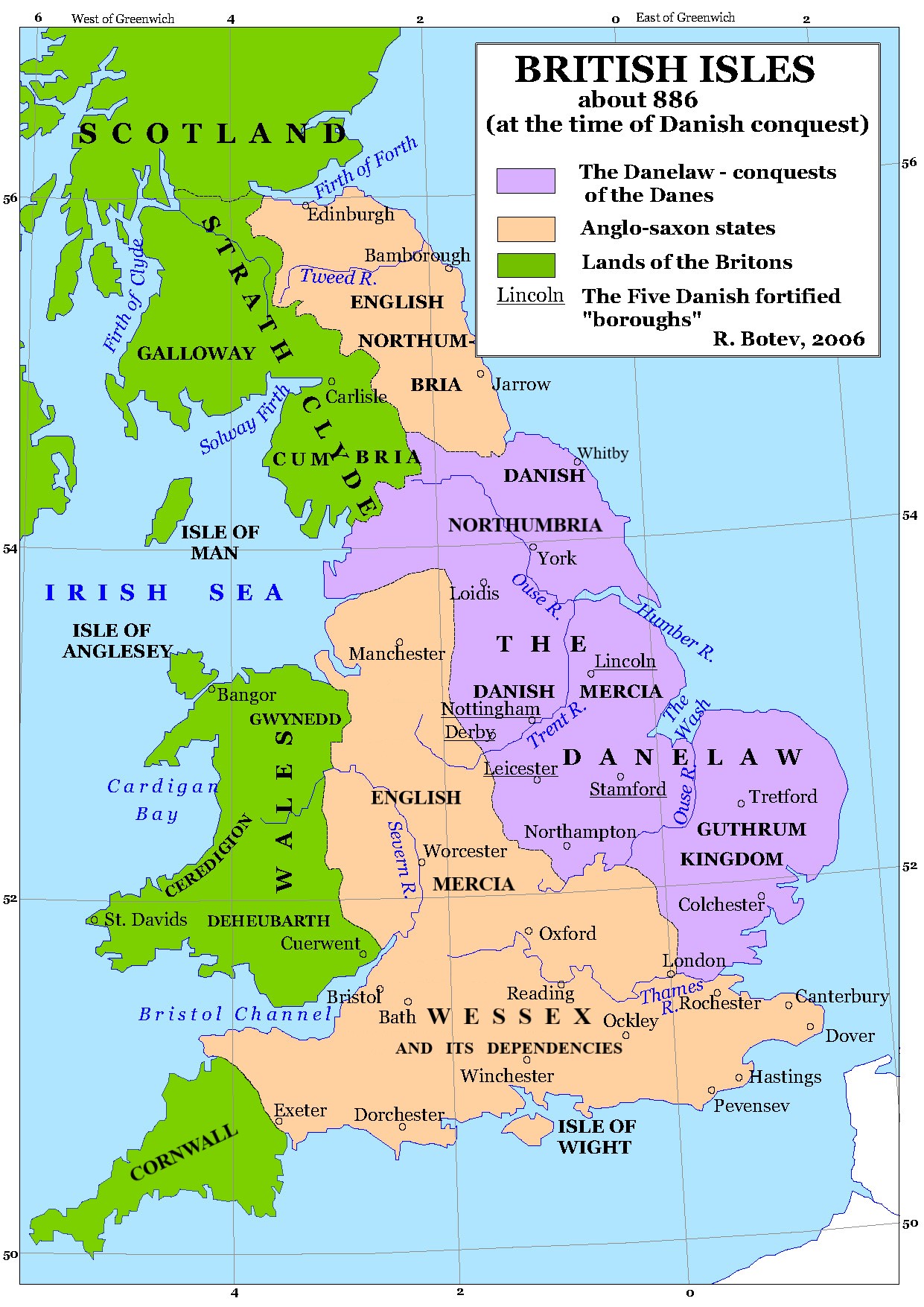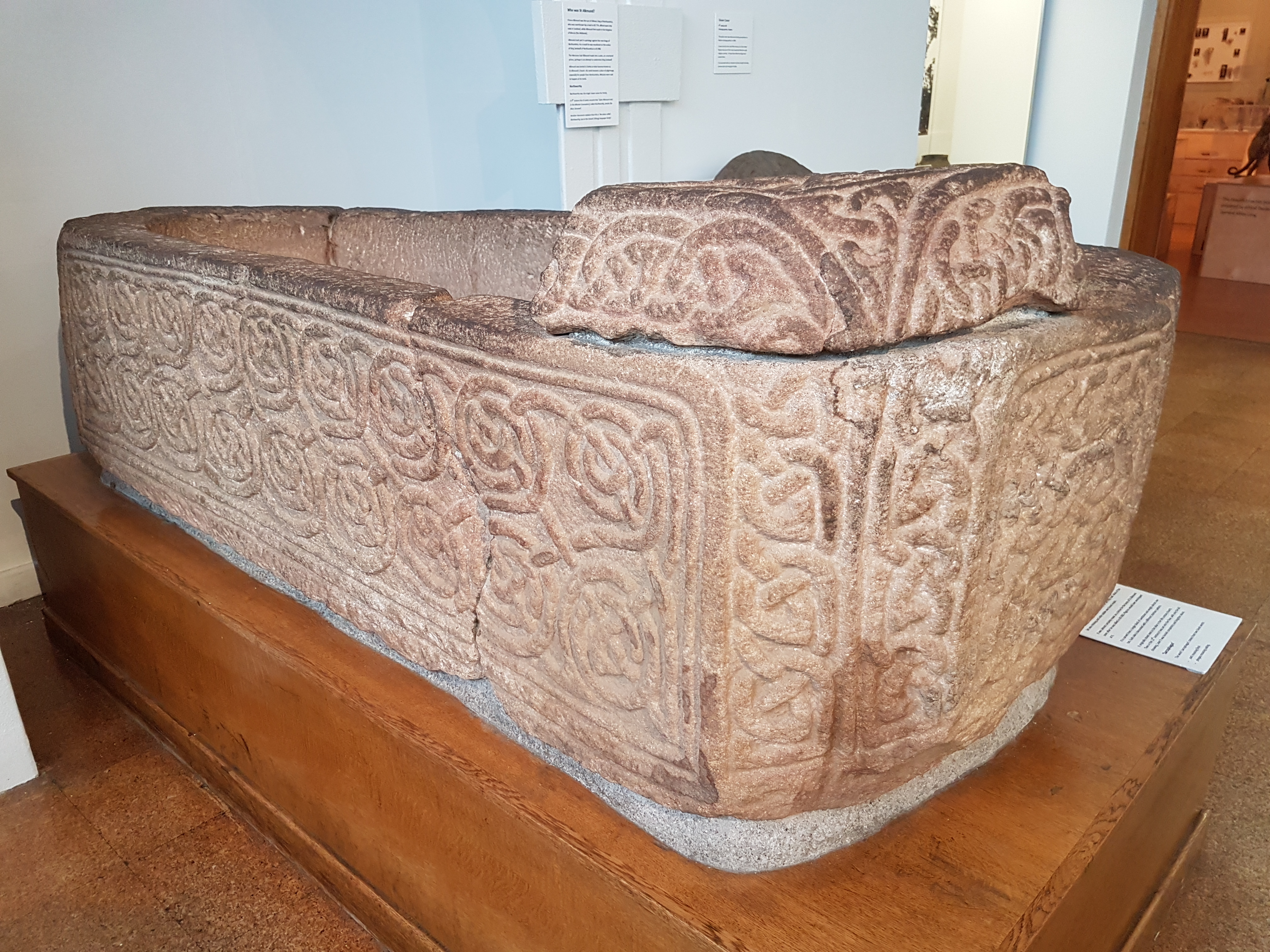|
Whitchurch, Shropshire
Whitchurch is a market town in the north of Shropshire, England. It lies east of the Wales, Welsh border, 2 miles south of the Cheshire border, north of the county town of Shrewsbury, south of Chester, and east of Wrexham. At the 2021 United Kingdom census, 2021 census, the population of the Whitchurch Urban parish was 10,141, and the population of the Whitchurch built up area was 9,855. Whitchurch is the oldest continuously inhabited town in Shropshire. Notable people who have lived in Whitchurch include the composer Sir Edward German, and illustrator Randolph Caldecott. History Early times There is evidence from various discovered artefacts that people lived in this area about 3,000 BC. Flakes of flint from the Neolithic era were found in nearby Dearnford Farm. Roman times Originally a settlement founded by the Roman Britain, Romans about AD 52–70 called Mediolanum (Whitchurch), Mediolanum ( "Midfield" or "Middle of the Plain"), it stood on a major Roman road b ... [...More Info...] [...Related Items...] OR: [Wikipedia] [Google] [Baidu] |
Shropshire (district)
Shropshire is a Unitary authorities of England, unitary authority area in the Ceremonial counties of England, ceremonial county of Shropshire, in the West Midlands (region), West Midlands region of England. It was created on 1 April 2009 from the former districts of Bridgnorth District, Bridgnorth, North Shropshire, Borough of Oswestry, Oswestry, Shrewsbury and Atcham and South Shropshire. The district is governed by Shropshire Council. It contains 188 civil parishes. Geography The district covers the towns of Oswestry, Church Stretton, Craven Arms, Ellesmere, Shropshire, Ellesmere, Wem, Whitchurch, Shropshire, Whitchurch, Much Wenlock, Shifnal, Bridgnorth, Broseley, Clun, Knighton, Powys, Knighton (part), Bishop's Castle, Cleobury Mortimer, Market Drayton and Shrewsbury. Governance The council has been under Conservative control since its creation in 2009, with the most recent 2021 Shropshire Council election, elections taken place in 2021. References {{Coord missing ... [...More Info...] [...Related Items...] OR: [Wikipedia] [Google] [Baidu] |
Antonine Itinerary
The Antonine Itinerary (, "Itinerary of the Emperor Antoninus") is an , a register of the stations and distances along various roads. Seemingly based on official documents, possibly in part from a survey carried out under Augustus, it describes the roads of the Roman Empire. Owing to the scarcity of other extant records of this type, it is a valuable historical record. Publication History Manuscripts Almost nothing is known of its author or the conditions of its compilation. Numerous manuscripts survive, the eight oldest dating to some point between the 7th to 10th centuries after the onset of the Carolingian Renaissance. Despite the title seeming to ascribe the work to the patronage of the 2nd-century Antoninus Pius, all surviving editions seem to trace to an original towards the end of the reign of Diocletian in the early 4th century. The most likely imperial patron—if the work had one—would have been Caracalla. Stemma There are many manuscripts preserving the ... [...More Info...] [...Related Items...] OR: [Wikipedia] [Google] [Baidu] |
Norman Conquest Of England
The Norman Conquest (or the Conquest) was the 11th-century invasion and occupation of England by an army made up of thousands of Normans, Norman, French people, French, Flemish people, Flemish, and Bretons, Breton troops, all led by the Duke of Normandy, later styled William the Conqueror. William's claim to the English throne derived from his familial relationship with the childless Anglo-Saxon king Edward the Confessor, who may have encouraged William's hopes for the throne. Edward died in January 1066 and was succeeded by his brother-in-law Harold Godwinson. The Norwegian king Harald Hardrada invaded northern England in September 1066 and was victorious at the Battle of Fulford on 20 September, but Godwinson's army defeated and killed Hardrada at the Battle of Stamford Bridge on 25 September. Three days later on 28 September, William's invasion force of thousands of men and hundreds of ships landed at Pevensey in Sussex in southern England. Harold marched south to oppose ... [...More Info...] [...Related Items...] OR: [Wikipedia] [Google] [Baidu] |
Welsh Marches
The Welsh Marches () is an imprecisely defined area along the border between England and Wales in the United Kingdom. The precise meaning of the term has varied at different periods. The English term Welsh March (in Medieval Latin ''Marchia Walliae'') was originally used in the Middle Ages to denote the marches between England and the Principality of Wales, in which Marcher lords had specific rights, exercised to some extent independently of the king of England. In modern usage, "the Marches" is often used to describe those English counties which lie along the border with Wales, particularly Shropshire and Herefordshire, and sometimes adjoining areas of Wales. However, at one time the Marches included all of the historic counties of Cheshire, Shropshire, Herefordshire, Worcestershire and Gloucestershire. Etymology The term ''March'' is from the 13th-century Middle English ''marche'' ("border region, frontier"). The term was borrowed from Old French ''marche'' ("limit, bo ... [...More Info...] [...Related Items...] OR: [Wikipedia] [Google] [Baidu] |
Alfred The Great
Alfred the Great ( ; – 26 October 899) was King of the West Saxons from 871 to 886, and King of the Anglo-Saxons from 886 until his death in 899. He was the youngest son of King Æthelwulf and his first wife Osburh, who both died when Alfred was young. Three of Alfred's brothers, Æthelbald, King of Wessex, Æthelbald, Æthelberht, King of Wessex, Æthelberht and Æthelred I of Wessex, Æthelred, reigned in turn before him. Under Alfred's rule, considerable administrative and military reforms were introduced, prompting lasting change in England. After ascending the throne, Alfred spent several years fighting Viking invasions. He won a decisive victory in the Battle of Edington in 878 and made an agreement with the Vikings, dividing England between Anglo-Saxon territory and the Viking-ruled Danelaw, composed of Scandinavian York, the north-east Midlands and East Anglia. Alfred also oversaw the conversion of Viking leader Guthrum to Christianity. He defended his kingdom again ... [...More Info...] [...Related Items...] OR: [Wikipedia] [Google] [Baidu] |
Æthelflæd
Æthelflæd ( – 12 June 918) ruled as Lady of the Mercians in the English Midlands from 911 until her death in 918. She was the eldest child of Alfred the Great, king of the Anglo-Saxon kingdom of Wessex, and his wife Ealhswith. Æthelflæd was born around 870 at the height of the Viking Age, Viking invasions of England in the Middle Ages, England. By 878, most of England was under Danish Viking rule – Kingdom of East Anglia, East Anglia and Northumbria having been conquered, and Mercia partitioned between the English and the Vikings – but in that year Alfred won a crucial victory at the Battle of Edington. Soon afterwards the English-controlled western half of Mercia came under the rule of Æthelred, Lord of the Mercians, who accepted Alfred's overlordship. Alfred adopted the title King of the Anglo-Saxons (previously he was titled King of the West Saxons like his predecessors) claiming to rule all Anglo-Saxon people not living in areas under Viking control. In the mid-8 ... [...More Info...] [...Related Items...] OR: [Wikipedia] [Google] [Baidu] |
Burh
A burh () or burg was an Anglo-Saxon fortification or fortified settlement. In the 9th century, raids and invasions by Vikings prompted Alfred the Great to develop a network of burhs and roads to use against such attackers. Some were new constructions; others were situated at the site of Iron Age hillforts or Roman forts and employed materials from the original fortifications. As at Lundenburh (medieval London), many were also situated on rivers of England, rivers: this facilitated internal lines of supply while aiming to restrict access to the interior of the kingdom for attackers in shallow-Draft (hull), draught vessels such as longships. Burhs also had a secondary role as commercial and sometimes administrative centres. Their fortifications were used to protect England's various royal mints. Name and were Old English developments of the Proto-Germanic language, Proto-Germanic word linguistic reconstruction, reconstructed as , cognate with the verb ''Oxford English Di ... [...More Info...] [...Related Items...] OR: [Wikipedia] [Google] [Baidu] |
Saxons
The Saxons, sometimes called the Old Saxons or Continental Saxons, were a Germanic people of early medieval "Old" Saxony () which became a Carolingian " stem duchy" in 804, in what is now northern Germany. Many of their neighbours were, like them, speakers of West Germanic dialects, including the inland Franks and Thuringians to the south, and the coastal Frisians and Angles to the north who were among the peoples who were originally referred to as "Saxons" in the context of early raiding and settlements in Roman Britain and Gaul. To their east were Obotrites and other Slavic-speaking peoples. The political history of these continental Saxons is unclear until the 8th century and the conflict between their semi-legendary hero Widukind and the Frankish emperor Charlemagne. They do not appear to have been politically united until the generations leading up to that conflict, and before then they were reportedly ruled by regional "satraps". Previous Frankish rulers of Austrasia ... [...More Info...] [...Related Items...] OR: [Wikipedia] [Google] [Baidu] |
Alhred Of Northumbria
Alhred or Alchred was king of Northumbria from 765 to 774. He had married Osgifu, either the daughter of Oswulf, granddaughter of Eadberht Eating, or Eadberht's daughter, and was thus related by marriage to Ecgbert, Archbishop of York. A genealogy survives which makes Alhred a descendant of Ida of Bernicia through a son named Eadric. History Æthelwald Moll was deposed in 765 and Alhred became king. Little is said of his reign in the ''Anglo-Saxon Chronicle'' other than the bare facts that he became king, and was then deposed and exiled in 774. Symeon of Durham's ''Historia Regum Anglorum'' reports that he fled to the kingdom of the Picts, where he was received by King Ciniod. Frank Stenton notes Ahlred's connection to the English missions on the continent. The mission of Saint Willehad, which led to the founding of the Archbishopric of Bremen, was authorised by a religious assembly called by Alhred. A letter from Alhred to Saint Lull, Archbishop of Mainz, a native of Wes ... [...More Info...] [...Related Items...] OR: [Wikipedia] [Google] [Baidu] |
Alkmund Of Derby
Alkmund of Derby (or of Lilleshall), also spelt Ealhmund, Alhmund, Alcmund, or Alchmund (d. c. 800) was a son of Alhred of Northumbria, who was caught up in the kingdom's dynastic struggles. History After more than twenty years in exile among the Picts, Alkmund returned with an army. As king, he acquired a reputation for being charitable to the poor and orphaned. He was killed about 800, for which King Eardwulf of Northumbria was held responsible. Whatever the exact circumstances, his death was regarded as a martyrdom, and Alkmund as a saint. He was buried first in Shropshire, and then removed to "Northworthy", i.e. modern Derby, because of Viking raids. Miracles were reported at the tomb. In the early 10th century, his remains were Translation (relic), translated to Shrewsbury, probably by Æthelflæd, Lady of the Mercians. When St Alkmund's, Shrewsbury became the property of Lilleshall Abbey about 1145, his body was translated back to Derby.''Saint Alkmund, His Life, Mur ... [...More Info...] [...Related Items...] OR: [Wikipedia] [Google] [Baidu] |
Æthelflæd As Depicted In The Cartulary Of Abingdon Abbey
Æthelflæd ( – 12 June 918) ruled as Lady of the Mercians in the English Midlands from 911 until her death in 918. She was the eldest child of Alfred the Great, king of the Anglo-Saxon kingdom of Wessex, and his wife Ealhswith. Æthelflæd was born around 870 at the height of the Viking invasions of England. By 878, most of England was under Danish Viking rule – East Anglia and Northumbria having been conquered, and Mercia partitioned between the English and the Vikings – but in that year Alfred won a crucial victory at the Battle of Edington. Soon afterwards the English-controlled western half of Mercia came under the rule of Æthelred, Lord of the Mercians, who accepted Alfred's overlordship. Alfred adopted the title King of the Anglo-Saxons (previously he was titled King of the West Saxons like his predecessors) claiming to rule all Anglo-Saxon people not living in areas under Viking control. In the mid-880s, Alfred sealed the strategic alliance between the survivin ... [...More Info...] [...Related Items...] OR: [Wikipedia] [Google] [Baidu] |
Vespasian
Vespasian (; ; 17 November AD 9 – 23 June 79) was Roman emperor from 69 to 79. The last emperor to reign in the Year of the Four Emperors, he founded the Flavian dynasty, which ruled the Empire for 27 years. His fiscal reforms and consolidation of the empire brought political stability and a vast building program. Vespasian was the first emperor from an Equestrian (Roman), equestrian family who rose only later in his lifetime into the Roman Senate, senatorial rank as the first of his family to do so. He rose to prominence through military achievement: he served as legatus, legate of Legio II Augusta during the Roman invasion of Britain in 43, and later led the suppression of the First Jewish–Roman War, Jewish rebellion of 66–70. While he was engaged in the campaign in Judaea (Roman province), Judaea, Emperor Nero died by suicide in June 68, plunging Rome into a year of civil war known as the Year of the Four Emperors. After Galba and Otho perished in quick succession, V ... [...More Info...] [...Related Items...] OR: [Wikipedia] [Google] [Baidu] |







